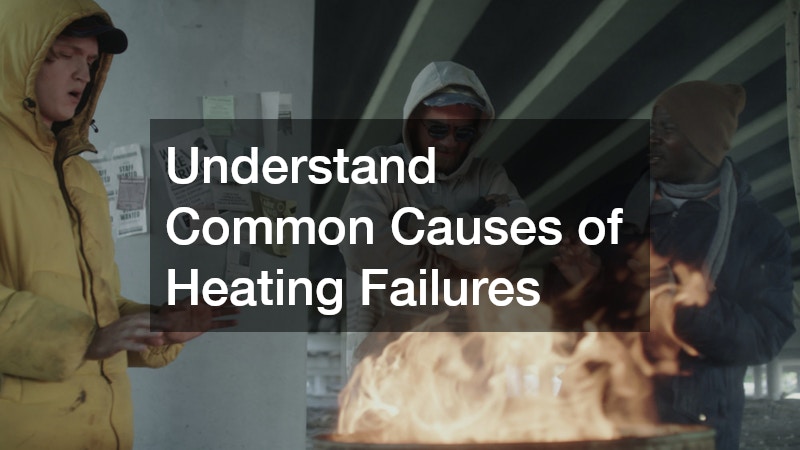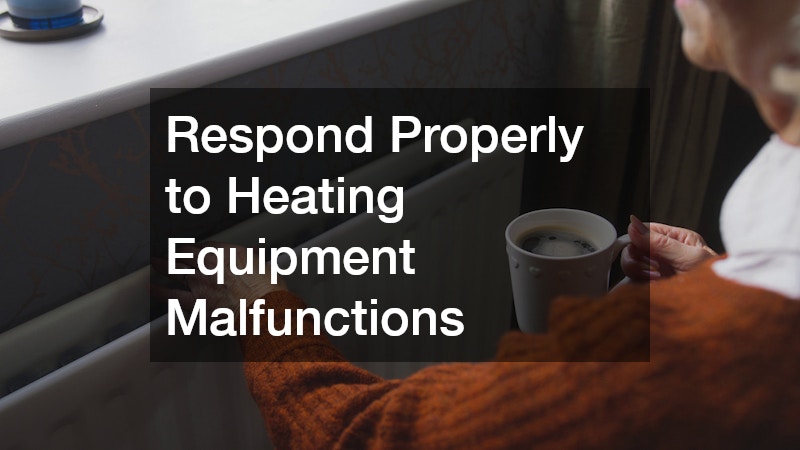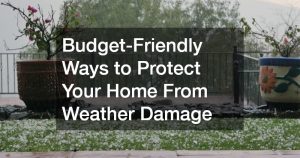In colder climates, heating systems are fundamental to maintaining comfort and safety in homes and buildings. Effective management and prevention of heating emergencies are crucial as they not only ensure the continued operation of these systems but also protect against potential health risks such as hypothermia. Proper understanding and proactive measures can prevent heating failures, which are often inconvenient and costly. Furthermore, adverse weather conditions can exacerbate these emergencies, making timely intervention even more critical.
Homeowners and building managers who are well-equipped with the knowledge and tools to handle heating emergencies can reduce the chances of catastrophic failures. By focusing on understanding, maintaining, and operating systems efficiently, they can prevent prolonged disruptions and associated expenses. This article will delve into various strategies to effectively prevent and manage sudden heating issues, ensuring safe and warm environments when temperatures drop.
Heating emergencies often occur when systems are overlooked until the peak of winter demand. Waiting until a unit breaks down places both property and occupants at risk, particularly during storms or extreme cold snaps when professional help may be delayed. A thoughtful approach that incorporates seasonal planning, routine inspections, and early signs of wear can go a long way in preventing bigger issues down the line. Even small inefficiencies—like blocked vents or dirty filters—can put strain on a heating system, eventually leading to more serious breakdowns.
Understand Common Causes of Heating Failures

Understanding the common causes of heating failures is a crucial step in preventing sudden heating issues. Many heating failures are caused by neglected maintenance, which can lead to system wear and tear. Residential electricians often find that components of heating systems, such as thermostats, motors, and electrical connections, may fail due to aging or improper use. Knowing these common causes allows property owners to take preventive measures before problems escalate into emergencies.
Another cause of heating emergencies is the inefficiency or malfunctioning of components such as heat exchangers and burners. Over time, these parts can become blocked with dirt or corroded, affecting the efficiency of the heating system. Homeowners are advised to work with professional plumbing companies to perform regular checks and replacements of these components to maintain their optimal function.
Additionally, issues with fuel supply, including oil and gas, can lead to significant heating failures. Ensuring that tanks are adequately filled and assessing connections for leaks or blockages are essential preventative measures. Engaging with a residential electrician can ensure that the electrical components controlling fuel supply mechanisms are functioning correctly, which is crucial for avoiding heat loss during cold weather.
Recognize Key Indicators of a Heating Problem
Recognizing the key indicators of a heating problem is essential in preventing heating emergencies from worsening. A system producing unusual noises, such as clanking or rattling, can indicate a mechanical issue that requires immediate attention. Plumbing companies often find that such noises signal problems with heat distribution or components that have become loose or worn.
Another critical indicator is the presence of cold spots in a home or building where the heating system is active. Uneven heating often suggests blockages or faults within the heating ducts or radiators. Homeowners should monitor their heating systems for such irregularities and reach out to professionals for a thorough evaluation.
Unexpected increases in energy bills without significant changes in usage are also a warning sign. Such spikes often mean the system is working harder than necessary to maintain heat levels, possibly due to inefficiencies or malfunctions. In these instances, consulting with plumbing companies or HVAC contractors can pinpoint the issue and advise on the best course of action to restore efficiency and manage costs effectively.
Use an Annual Maintenance Checklist
Implementing an annual maintenance checklist is a proactive way to prevent heating emergencies. Regular maintenance helps identify potential issues before they become severe and ensures all parts of the system are operating efficiently. This checklist should include inspecting and cleaning components, checking thermostat settings, and reviewing the overall energy efficiency of the system.
Incorporating a siding replacement service into this checklist can also be beneficial. Proper siding helps retain heat within a building, reducing the load on the heating system and contributing to overall efficiency. An inspection for any cracks or deterioration in siding can prevent unnecessary heat loss and ensure the longevity of both the siding and the heating system.
An annual review of safety features such as carbon monoxide detectors and smoke alarms is also recommended. These devices play a critical role in detecting issues that could lead to emergencies. Ensuring they are in working order is an essential aspect of a thorough maintenance plan that protects against heating system failures and associated health hazards.
Take Advantage of Effective Heating Systems to Avoid Emergencies

Selecting and maintaining effective heating systems is a key strategy in avoiding heating emergencies. High-efficiency systems, while initially more costly, provide improved performance and reliability over time. They reduce the likelihood of breakdowns and result in lower utility costs due to better energy usage. Consulting with HVAC contractors can guide decisions regarding the most effective systems suited to specific needs and budgets.
Additionally, incorporating kitchen remodeling services can lead to improvements in how buildings retain and distribute heat. Thoughtful designs can maximize natural heating by improving insulation and ventilation systems. Collaborating with professionals in kitchen remodeling ensures that renovations complement existing heating systems, enhancing efficiency and reducing emergency risks.
It is crucial to consider the integration of smart thermostats and zone heating solutions as part of an effective heating system. These technologies allow for precise control of heating distribution, preventing wasted energy and reducing strain on the system. Implementing such solutions can decrease the frequency of sudden heating issues substantially and contribute to a comfortable and cost-effective indoor environment.
Find Qualified Heating Technicians
Working with qualified heating technicians is essential for effectively handling and preventing heating emergencies. Professional HVAC contractors are equipped with the technical knowledge and experience necessary to address complex heating issues. They can perform accurate diagnostics, conduct thorough repairs, and offer preventive measures to mitigate future risks.
Finding reliable technicians involves checking for certifications, past client reviews, and industry experience. Establishing a relationship with trusted HVAC contractors ensures prompt service when emergencies occur and access to professional advice on maintaining heating systems year-round. This proactive approach reduces the likelihood of significant system failures.
Many homeowners also benefit from having a network of skilled professionals, including those in residential electrician services, who can address related electrical system concerns. This collaboration ensures comprehensive care for all aspects of a heating system, which minimizes disruptions and improves overall system resilience. Having a qualified team in place is a vital component of an effective heating emergency management strategy.
Engage in the Best Practices for Operating Heating Systems
Engaging in best practices for operating heating systems not only improves efficiency but also mitigates the risk of heating emergencies. Understanding optimal temperature settings and how to adjust them based on occupancy is a foundational practice. Overloading systems by keeping temperatures excessively high can lead to wear and potential failure. Homeowners should aim for settings that balance comfort with efficiency.
Regular cleaning and inspection of vents and filters should be conducted to ensure unimpeded airflow. Clogged or blocked air passages reduce system efficiency and increase the chances of breakdowns. Window contractors can assist in ensuring proper sealing and insulation, further contributing to the efficient operation of heating systems by minimizing unwanted drafts and heat loss.
Educating occupants about the correct operation of heaters, including setting controls and recognizing warning signs of malfunctions, is also crucial. These practices play an essential role in daily operations, allowing quick identification and rectification of potential issues. Applying these best practices helps maintain system performance and reduces emergency occurrences.
Respond Properly to Heating Equipment Malfunctions

A proper response to heating equipment malfunctions can minimize the impact and duration of heating emergencies. Swift identification of the problem and immediate shutdown of affected systems prevent further damage and ensure safety. This approach limits the scope of repairs needed and reduces overall downtime.
Employing bathroom remodeling experts to inspect and enhance insulation in often-overlooked spaces, like bathrooms, helps maintain uniform heating even during malfunctions. This proactive measure ensures that rooms retain heat longer, minimizing discomfort during equipment downtimes. Regular updates and improvements through bathroom remodeling can add layers of efficiency and comfort, mitigating the severity of sudden heating problems.
Establishing a clear plan that includes contact information for responsive service providers helps in quick recovery from failures. Homeowners should maintain a list of local HVAC contractors who can offer prompt service. Immediate professional intervention, combined with knowledge of system vulnerabilities, aids significantly in addressing emergencies effectively and safely.
Prepare Well for Winter Heating Needs
Proper preparation for winter heating needs is essential to prevent and manage heating emergencies effectively. Adequate planning includes ensuring your heating system is in good working order well before the cold weather sets in. This preparation involves having a licensed residential electrician inspect and address any potential electrical issues that could compromise the system’s reliability in winter conditions.
Landscaping considerations, such as those provided by fencing solutions and local lawn care companies, play a role in winter preparedness. By ensuring clear pathways and unimpeded access to outdoor heating units or vents, property owners can avert operational issues caused by snow or debris accumulation. Effective landscaping ensures systems remain accessible and functional during adverse weather conditions.
Proper insulation and weatherproofing carried out before the winter months significantly enhance a building’s ability to retain heat. These measures reduce the strain on heating systems, lowering the risk of failures. Partnering with professional contractors for roofing and window services ensures that every part of the building contributes to an efficient and reliable heating system, reducing the likelihood of unexpected heating issues in winter.
Avoid Common Mistakes That Lead to Sudden Heating Issues
Avoiding common mistakes is vital in reducing the risk of sudden heating issues and maintaining system efficiency. One frequent oversight is neglecting regular maintenance, which leads to equipment wear, blockage, and eventual malfunction. Proactive engagement with plumbing companies can ensure timely servicing and inspections to address such issues.
Another mistake is the improper installation of heating components, which often leads to inefficiencies and failures. Employing professional HVAC contractors for installation and setup guarantees that systems are installed correctly and operate at optimal performance. This step alone can prevent many common issues that lead to heating emergencies.
Ignoring insulation and building maintenance further compounds heating issues. Poorly insulated spaces demand more from heating systems, resulting in higher wear and the potential for failures. Roofing companies and siding replacement services assist in maintaining protective layers, ensuring that buildings are not vulnerable to heat loss, and that heating systems are not overextended.
Know How Climate and Geographical Location Affect Heating Issues

Understanding how climate and geographical location affect unexpected heating problems is critical in tailoring effective prevention strategies. Areas prone to extreme temperatures demand robust and efficient heating systems capable of handling increased workloads. Knowledge of local climatic patterns helps in selecting systems suited to specific environmental demands.
A local lawn care company or other landscaping service can provide insights into geographical influences on heating needs. For instance, proper tree placement can shield buildings from harsh winds, reducing the strain on heating systems. Strategic landscaping can significantly improve a building’s energy efficiency and enhance heating reliability during adverse conditions.
Geographical factors also inform the availability and accessibility of fuel or energy sources required for heating. Understanding these nuances allows for better planning and risk management, reducing the potential for sudden heating problems due to shortages or supply interruptions. Awareness of these local issues enables property owners to make informed decisions regarding system capabilities and preparedness.
Effective prevention and management of heating emergencies hinge on a thorough understanding of common failures, proactive maintenance, and strategic system operation. By recognizing system vulnerabilities and employing qualified professionals, homeowners can mitigate risks significantly. Comprehensively preparing for seasonal demands and avoiding common pitfalls can ensure heating systems function reliably, maintaining warmth and safety.











